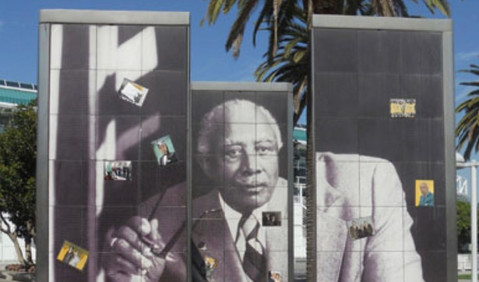Pat Ward Williams
- Monica Blignaut
- Aug 5, 2019
- 2 min read

Artist 178 Pat Ward Williams Reframing photography Remembering female artists from history
Pat Ward Williams (born 1948) is an African-American photographer whose work often focused around the complexities of race, gender, and history. She is based in Los Angeles-based and her work explores the personal and political lives of African-Americans.
The artist set out to disrupt the homogenous way black life was captured on camera. “We always looked so pitiful, like victims,” she told the LA Times. “I knew I was a happy person. There were aspects of the black community that weren’t being shown.”
Attempting to break past photography’s tendency to linger on surfaces, Williams incorporates other media and methodology into her process, yielding mixed media collages that collapse past and present, history and imagination.
Jamillah James, a curator at the Institute of Contemporary Art, has been quoted saying “Her combination of photography, found materials, and text engages viewers in a perceptual tug of war between what they see, their own associations, the artist’s voice, and the weight of history.”
One of Williams’ best known works is Accused/Blowtorch/Padlock (1986), which consists of an image of a black man tied to a tree surrounded by text expressing the artist’s reaction to this image.

Williams has explained her intent in the work and the title of the piece: “I force the viewer to look at what is really going on by dissecting the important body of information and by directing with text what the viewer should notice: the tied hands (accused), the scarred back (blowtorch), and the lock, chain, and tree (padlock).”
It’s intriguing despite her volume of art many pages reflect only this one artwork as their focus. I have included it but I also include of her older pieces where she was still exploring with types of over exposure to her more recent works that mimic advertising and using lighting as part of the work through the background.
One can argue much like how painters go through phases her use of language has become a visual aesthetic adding more layers to her photography.













Comments